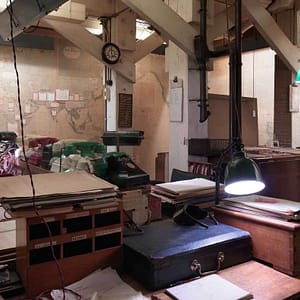Journey of a Dish: Georgian Khachapuri and Khinkali
The post Journey of a Dish: Georgian Khachapuri and Khinkali appeared first on TD (Travel Daily Media) Brand TD.
Folding the dough in a circle to make perfect layers did not work. Immediately, the host came over, unfolded my dough, and said, ‘Try it again.’ I laughed, saying, ‘ Well, I did my best, and at the end of the day, it will taste good, with or without the proper folding!’
So, I tried folding again and finally managed to fold a dumpling, well kind of, but I needed to catch up to the others in my masterclass. I took another bite of cheese and was glad I signed up for a Khinkali and Khapouri masterclass.
Khinkali is a Georgian (the country) soup dumpling originating in the mountains as an inexpensive way to feed a family. The ingredients included minced lamb, cumin, salt, and pepper. It eventually spread to the cities, and people started adding coriander to the mix or using cheese for the filling. Nowadays, people use beef or pork instead of lamb.
Our host from St. Tbisli Bunny told us we would not add coriander and would stick to the original ingredients but with beef. Three of us were in the masterclass now, trying to fold the small round ball of dough, creating a small layer of each piece folded on top of the other while forming a circle with the dough.
I was unsuccessful with my folding, and at one point, I tried anything to make a circle to add the filling. The key to the filling is that the meat has to have some water, making it moist so a bit of soup is created when it cooks. After adding the beef, you twist the top part of the circle to close it, creating a small twisted knob on top.
Once we had twelve dumplings, we waited seven minutes or so for them to boil. In the meantime, we ate the Chachapouri we had made beforehand.
Khachapuri is bread with cheese. There are different varieties, including one with egg on top, known as Adjarian, but in this class, we made the one with two types of cheese.
After making the dough, add a lot of cheese and mix again. After rolling out the dough, a mixture of cheese and egg is added to the top and baked in the oven for about fifteen minutes. The Khachapuri can be cut into triangles and then eaten. The warm bread with cheese hit the spot.
I paced myself with the bread to enjoy a few pieces of Khinkali. Eventually, the Khinkali was ready, and we also enjoyed the dish.
The correct way to eat Khinkali is to hold the knob and turn it upside down. Take a small bite to drink the juice first, then eat the rest of the Khinkali. But most people do not eat the knob, so leave this on your plate.
The masterclass was fun and filled for two hours. It also included samples of Georgian cheese – Imeruli, and Suluguni, and salad. They resembled ricotta and mozzarella. Khinkali had a lot of work to prepare for, and I appreciate the effort to make it.
Another reason cooking classes are excellent is that they help people learn about a culture and appreciate the hard work that goes into the cuisine.
Visitors can sign up for the class on Instagram @st.tbilisi.bunny. The cost is 65 Gel ($25).
The post Journey of a Dish: Georgian Khachapuri and Khinkali appeared first on Brand TD.












